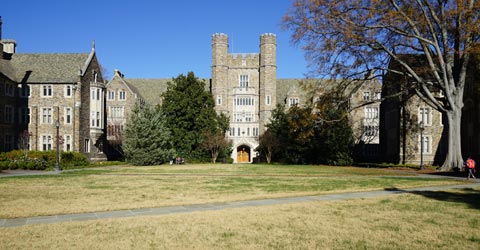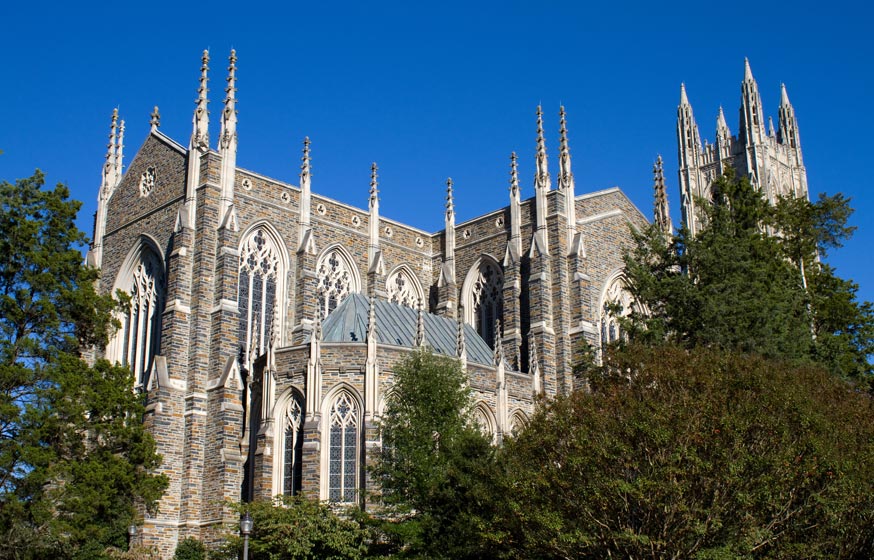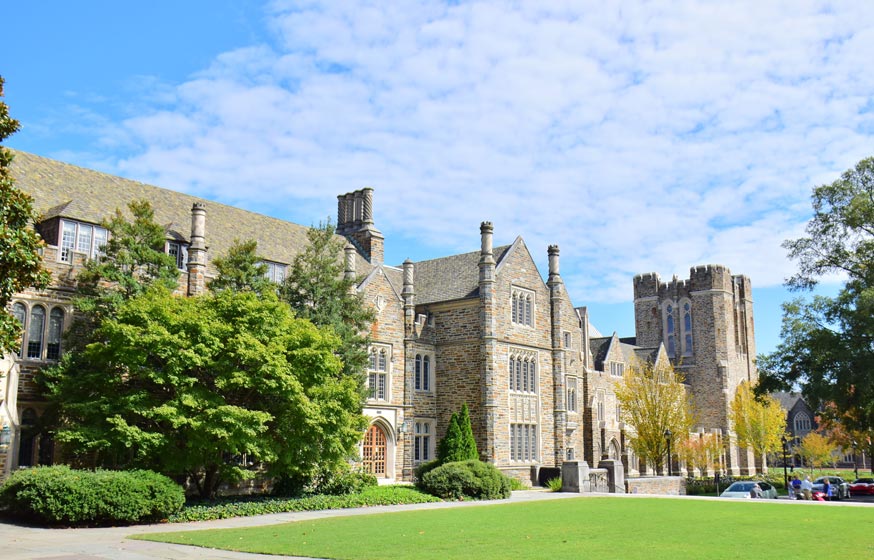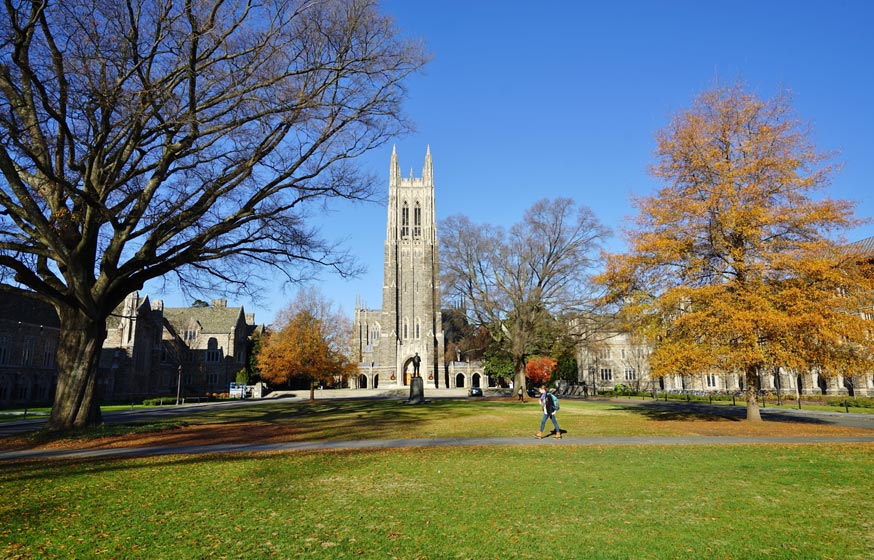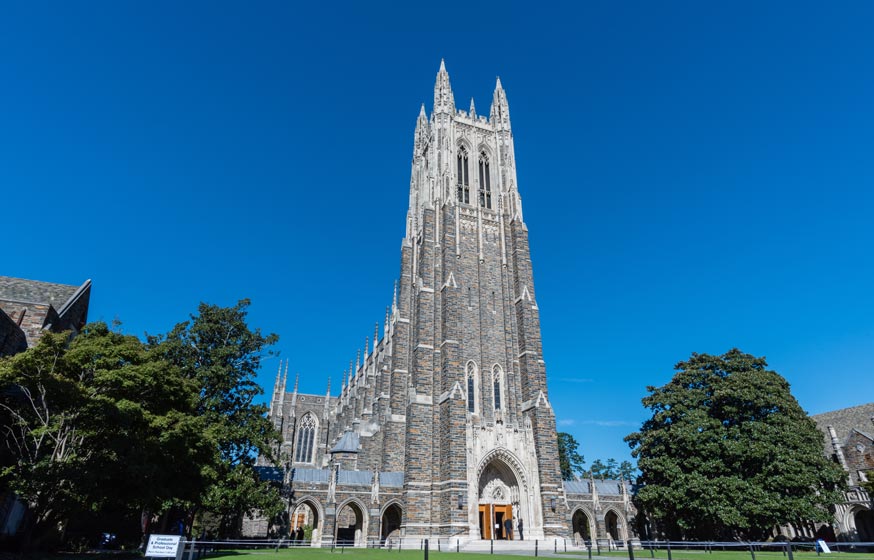Get Matched With Online Colleges
Duke University, located in Durham, North Carolina, is a private, not-for-profit university. Durham is a large city, which gives students ample opportunity to see the sights and find areas they want to visit for much-needed relaxation. Campgrounds and other recreational areas may be a spot that students will gravitate to once they are finished studying. The campus also has several green areas where students can go to relax or study. The university campus is large, requiring students to drive their cars or take any available shuttles to get from one building to another so they can reach their classes on time.
Search All Programs
Overview of Duke University
Duke’s Carnegie classification in doctoral universities shows a “very high research activity” classification. It is also affiliated with the United Methodist Church. There is a divinity school on campus, allowing students who want to go into ministry to earn their degrees.
Advanced placement credits are accepted from any students who have passed AP exams. Duke University holds an institutional accreditation from the Southern Association of Colleges and Schools, Commission on Colleges (it has been accredited since January 1st, 1895). Duke also holds programmatic accreditations for several degree programs, such as nursing, psychology, physical therapy, and theology.
General Information
| School Type | Private not-for-profit |
|---|---|
| Campus Setting | City: Large |
| Campus Housing | Yes |
| Student Faculty Ratio | 6:1 |
| Graduation Rate | 96% |
| Year Founded | 1838 |

Student Enrollment
Total Students16,606
6,682
9,924
Undergraduate Student
Male 3,341
Female 3,341
Graduate Student
Male 4,962
Female 4,962
Explore Map
Top Rankings For Duke University
Duke Acceptance Rate and Admissions
APPLICATION35,786
ACCEPTANCE3,221
Acceptance Rate9%
Enrollment 1,771
| Admissions | |
|---|---|
| Application Fee | $85 |
| High School GPA | Recommended |
| High School Rank | Recommended |
| High School Transcripts | Required |
| College Prep Courses | Required |
| Recommendations | Required |
| SAT/ACT | Required |
| TOEFL (Test of English as a Foreign Language) | Recommended |
| Application Deadline | January 3 |
| Common Application Accepted | Yes |
Duke Tuition Cost & Financial Aid
Duke University costs money to attend‚ $58,031 for a recent academic year. Students who wish to attend Duke will likely need to apply for financial aid. The average net price is the amount of tuition, fees, and books that remains to be paid by the student or their family once their financial aid package has been applied to the original cost. In one recent academic year this was $19,785.
By income, the net price varies as follows:
- Families earning up to $30,000 pay nothing
- Families earning between $30,001 and $48,000 pay nothing
- Families earning between $48,001 and $75,000 pay $3,398
- Families earning between $75,001 and $110,000 pay $14,925
- Families earning more than $110,001 pay $45,529
| Average net price | 2017-2018 |
|---|---|
| Net Price | $19,785 |
| Average Total Aid | $52,681 |
| Students Receiving Financial Aid | 66% |
| Room & Board | $15,588 |
Sticker Price
- Tuition In-State - $58,031
- Tuition Out-of-State - $58,031
- Books and Supplies - $1,434
- Room & Board - $15,588
- Other - $1,976
Academics
The student to faculty ratio is a comfortable 6 to 1, giving both students and professors ample time to meet with each other on class-related issues. The retention rate for first-time students is 98%; this is the rate at which freshmen return for their second year of school.
The 4-year graduation rate is 87% and the 6-year graduation rate is noticeably higher at 96%, this is not necessarily a bad thing, but evidence that their degree programs may be challenging enough that students need two extra years to complete them.
The overall student body population numbers almost exactly 16,600. Undergraduates make up 40% with 6,600+ students and graduate students make up the remaining 60%, with 9,900+ students enrolled. Evening classes are not offered for students who can’t take classes during the day. However, online classes are offered, allowing non-traditional or working students a flexible way to earn their degree.
The most popular degree programs are biological and biomedical sciences; business, management, marketing and related support services; computer and information sciences and support services; and engineering technology and engineering-related fields.
Retention
Rate
4 year
Graduation
Rate
6 year
Graduation
Rate
Student Population Total
Student Population 16,606
6,682
9,924
Most Popular Programs & Majors
(# of Diplomas Awarded by Subject)
| All Social Science Majors | 340 Total Graduates / 18% |
|---|---|
| Econometrics and Quantitative Economics | 201 Graduates |
| Political Science and Government, General | 85 Graduates |
| Sociology | 30 Graduates |
| Anthropology | 23 Graduates |
| All Engineering Majors | 297 Total Graduates / 16% |
| Computer Engineering, General | 100 Graduates |
| Bioengineering and Biomedical Engineering | 96 Graduates |
| Mechanical Engineering | 70 Graduates |
| Civil Engineering, General | 25 Graduates |
| Environmental/Environmental Health Engineering | 6 Graduates |
| All Biological & Biomedical Majors | 280 Total Graduates / 15% |
| Biology/Biological Sciences, General | 157 Graduates |
| Neuroscience | 87 Graduates |
| Anatomy | 28 Graduates |
| Biophysics | 6 Graduates |
| Biostatistics | 2 Graduates |
| All Computer Information Science Majors | 172 Total Graduates / 9% |
| Computer Science | 169 Graduates |
| Computer and Information Sciences, Other | 3 Graduates |
| Public Administration and Social Service Professions | 163 Total Graduates |
| Public Policy Analysis, General | 163 Graduates |
| All Other Diplomas | 33% |
Outcome & Salary
Students whose families earn less than $75,000 really reap the benefits of a Duke University education. The average salary for a Duke graduate is $84,000, their early-career salary is $73,500, and their mid-career salary is $146,600. Their 10-year salary earnings potential is $840,000 and their 20-year salary earnings potential is up to $2,306,000. Even knowing that the cost of education each academic year is $79,140, students should still be able to realize a return on investment (ROI) when they gain employment that pays handsomely. Their 10-year projected ROI is $760,860 and their 20-year ROI is $2,226,860.
High school graduates’ national average salary is $38,792. Their 10-year projected income is $387,920 and their 20-year projected income is $775,840.
| Graduates Salary | |
|---|---|
| College Grads Early Career Salary | $73,500 |
| College Grads Average Salary | $84,000 |
| College Grads Mid Career Salary | $146,600 |
| Return on Investment (ROI) | |
|---|---|
| 10 Year Salary Earnings Potential | $840,000 |
| 20 Year Salary Earnings Potential | $2,306,000 |
| Cost of Education (Net Price) 4 Year | $79,140 |
| 10 Year Projected ROI | $760,860 |
| 20 Year Projected ROI | $2,226,860 |
| No College Education Salary Comparison | |
|---|---|
| National Average Salary | $38,792 |
| 10 Year Projected Income | $387,920 |
| 20 Year Projected Income | $775,840 |
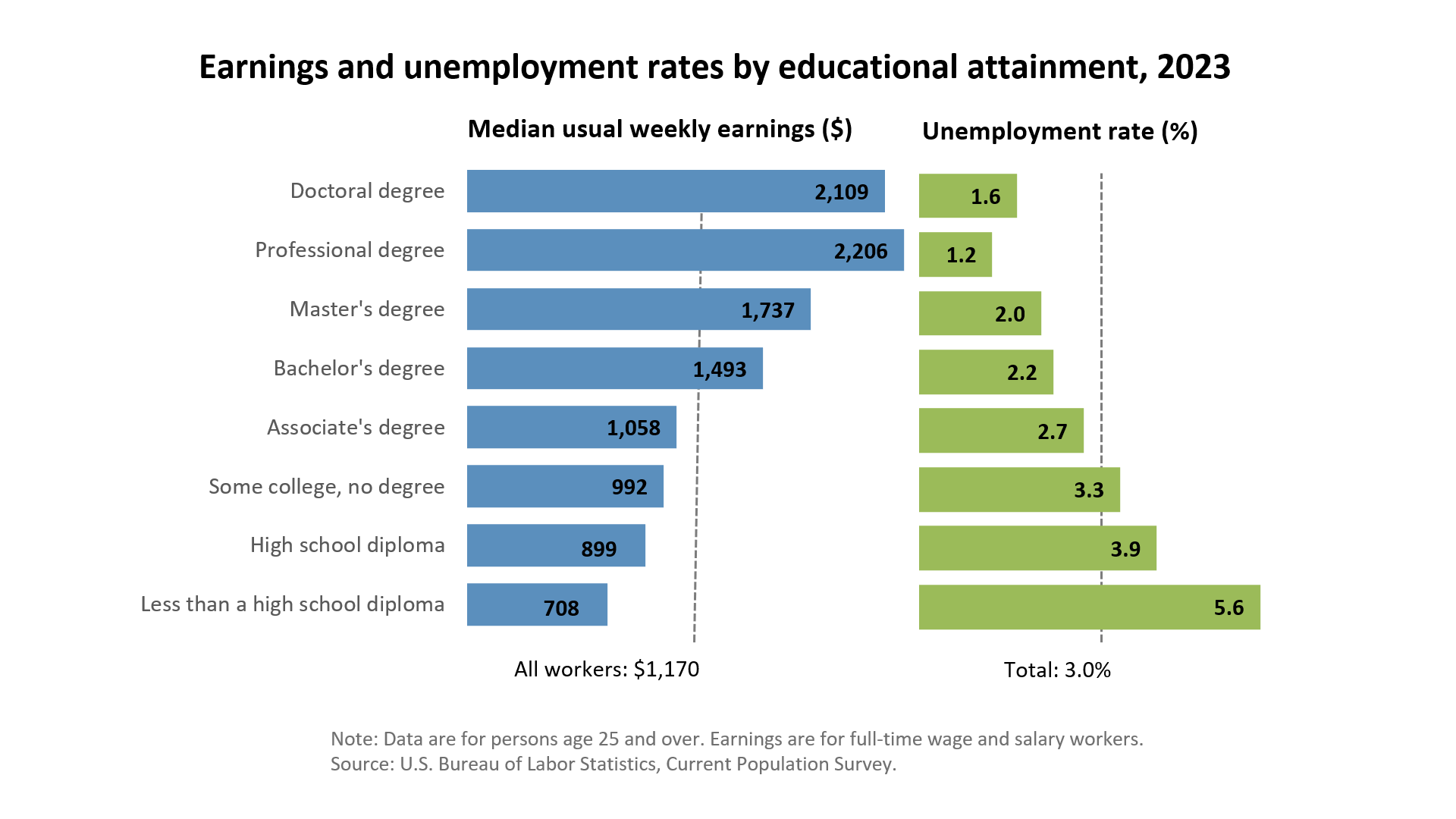
Related Top College Resources





















